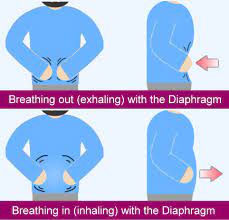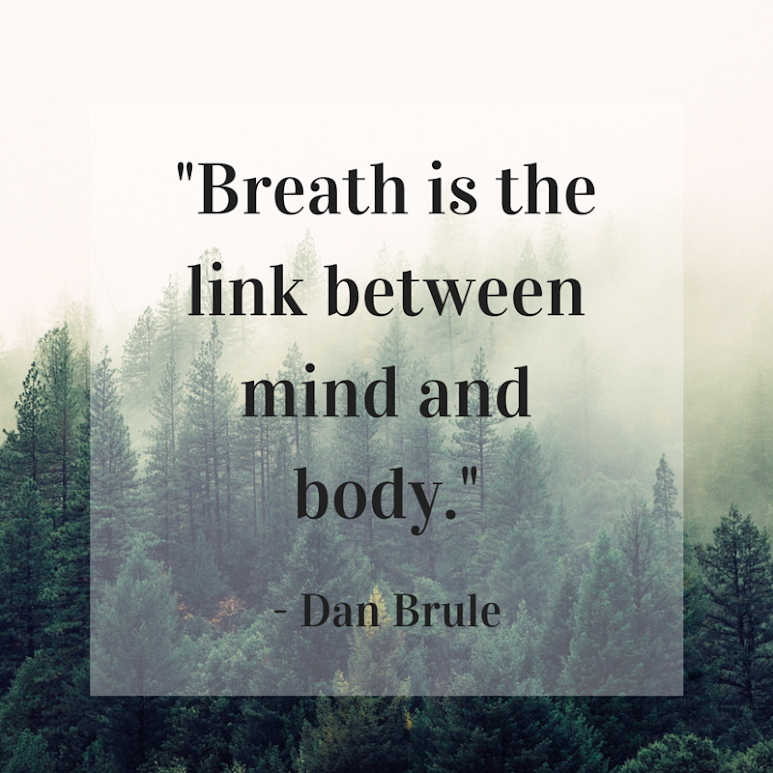Hey, are you suffering from COPD or your family members ? Then this article is just for you to read till the end .you will indeed get answered all the question that arises in your mind about what is COPD and its management? you will know how to live well with copd.

Table Index
- 1 What is COPD?
- 1.1 The symptoms of COPD include:
- 1.2 Walk
- 1.3 Bike
- 1.4 Arm curls
- 1.5 Calf Raises
- 1.6 Leg Extensions
- 1.7 Exercise Your Diaphragm
- 1.8 Breathe Right for Better Results
- 1.9 Stretching exercise
- 1.10 Try a New Way to Move
- 1.11 Exercising on Oxygen
- 1.12 When Not to Exercise
- 1.13
- 1.14 Managing Life With COPD:
- 1.15 Role of Ayurveda in COPD
- 1.16 Avoid Etiological Factors
- 1.17 A Healthy Diet
What is COPD?
Facing the challenge of COPD is difficult, but there are steps that you can take to make it easier to live well with copd. It can be hard to know what will work for you, and it is important to find activities that are both enjoyable and help with your condition.
COPD is a chronic lung disease that makes it difficult to breathe. COPD is often caused by smoking cigarettes, but not everyone who smokes gets the condition.

There are typically two types of COPD: chronic bronchitis, the result of chronic inflammation in the lining of the airways.
Chronic bronchitis is characterised by inflammation and irritation of the bronchi and bronchioles, and the subsequent production of thick mucous leading to a chronic cough.
Emphysema is caused by progressive enlargement of air sacs called alveoli. As these sacs enlarge your lungs lose their elasticity so it can become hard to breathe.
COPD is a chronic lung condition that causes the lungs to become damaged and gradually lose their ability to function. COPD is a public health concern because the disease is serious, is often under-diagnosed and can be debilitating.
The symptoms of COPD include:
Chronic bronchitis

- Productive cough that lasts for 3 months or more per year for at least 2 years
- Dyspnea (shortness of breath)
- Frequent upper respiratory tract infections
- Fatigue
- Cyanosis and peripheral edema in advanced stages
- Usually normal weight or overweight
Emphysema
- Dyspnea: the main symptom in emphysema
- Wheezing
- Chest tightness
- Enlargement of the chest (barrel chest)
- Fatigue
- Weight loss and cachexia
- Cyanosis and peripheral oedema in advanced stages
COPD is a long-term lung condition that makes it difficult to breathe. The most common causes of COPD are smoking and air pollution. COPD is the third leading cause of death in the world and its diagnosis rate is rising. It was estimated that COPD caused about 230,000 deaths in 2013 and this number is expected to rise to over 300,000 by 2020.
There are two main types of COPD – chronic bronchitis, which is an inflammation of the lining of the airways, and emphysema, which causes permanent damage to the alveoli in your lungs.
COPD is a common form of lung disease that affects about 12 million people in the United States. COPD is most often caused by cigarette smoking, though it can also result from a combination of other factors like exposure to coal dust and chemicals, genetics, and air pollution.
COPD can be managed by learning about the condition and its effect on your life, taking medication, maintaining a healthy lifestyle, and following a doctor’s guidelines.
DON’TS OF COPD
A patient suffering from COPD should avoid smoking,
tobacco smoke
dust and fumes
They should also be mindful of their diet to avoid foods that can worsen the disease such as high-sugar foods, caffeine and alcohol.
Let’s look at out how well you can manage with balancing and working out on four pillars of health .
1)FOOD
2)EXERCISE
3)EMOTIONAL HEALTH
4)MEDITATION
Physiotherapy management for COPD :
An experienced physiotherapist can assess and treat COPD patients. To help people managing their COPD and adjusting their lifestyles, they offer support, information, and resources.
In managing COPD, the therapist may use a variety of treatment modalities, such as medical education, pulmonary rehabilitation,
Exercise to make your muscle stronger
It is more difficult to do things when you have COPD. You can become short of breath just shopping or cooking if your muscles need more oxygen. This is changed by exercise. Strengthening your muscles makes everyday activities easier.

Walk
Walking is an great exercise .if haven’t been walking .start walking under the guidance of doctor .start 30m second to 1 minute .start slowly .
Bike
In rehab center you can do exercise on stationary gym under the observation of the physiotherapist .They will guide you according to your capacity .If any exercise makes you short of breath, stop and sit down for a few minutes.
Arm curls
Doing chest exercise such as arm curls and forward arm raises strengthen your chest area that will help you in daily activity .start with 10 Repetition .
Neck EXERCISES
NECK EXERCISE
Rotate your neck in coordination with your breathing pattern.
Look up while breathing in and look down with breathing.
Calf Raises
Calf muscle is known as second heart of our body .
Standing on your toes and doing toes off .This is the best calf exercise.it will help in blood pumping back to heart and your walking gets easier .
Leg Extensions
Sit in chair .raise your legs up .do 10 Repetition .It will help you to maintain stronger thighs .you will easily able to do sit and standing activity.

Exercise Your Diaphragm
This move strengthens a key breathing muscle, the diaphragm. Lie down with your knees bent or sit in an easy chair — one hand on your chest, one below your rib cage. Slowly inhale through your nose so that your stomach raises one hand. Exhale with pursed lips and tighten your stomach. The hand on your chest should not move. Do this for 5 to 10 minutes, three or four times a day. Breathing this way will become easy and automatic
Breathe Right for Better Results
While exercising, breathe slowly. Keep your mouth closed while inhaling through your nose. It will warm the air and filter it. Inhale for two times as long as you exhale. Make sure you don’t pant. This will prevent your lungs from getting all the air out.
If your breath gets fast or shallow, stop and rest. Relax your body. Do pursed-lip breathing: Breath in slowly through your nose and exhale slowly through your pursed-lips.


Stretching exercise
Stretch gently before and after exercising. To try this stretch, place your hands flat on a wall at arm’s length and shoulder height. Bend the right knee as you step forward. Feel your left calf stretching as you bend your left knee. This shouldn’t hurt. You can do this with the left leg as well. Continue switching legs for three to five reps on each leg.
Try a New Way to Move
Jogging, skating, or rowing can be good exercises for people with mild COPD — and fun ways to avoid workout boredom. Some activities do double duty, like water aerobics, which is good for COPD and arthritis. For beginners, a pulmonary rehab program is a good, safe place to start. Some people may need to avoid push-ups, sit-ups, or heavy lifting. Ask your doctor what’s right for you.
Exercising on Oxygen
If you use oxygen, you may worry that the equipment will be a hazard or a hassle. But if your doctor says to use oxygen during exercise, do it.
Extra long tubing can help at home. Small, light-weight “travel” tanks keep you mobile. You can do most exercises with oxygen.
When Not to Exercise
Give yourself a day off if your COPD symptoms are acting up: you’re wheezing, coughing up more fluids than usual, or are unusually short of breath. You may want to talk to your doctor. Call for help right away for shortness of breath that doesn’t improve, fast or irregular heartbeat, and feeling dizzy or lightheaded.
Add exercise in your daily lifestyle
The goal for most people is to exercise for 20 to 30 minutes, at least three times a week. Include cardio and strength training. If you’re out of shape, start a level that’s comfortable — even if it’s just one minute. Ways to stay motivated include:
- Find an exercise buddy.
- Plan exercise in your daily routine.
- Keep an exercise journal — and make notes as you feel better in your daily activities.
If you need to gain weight, your body can make good use of the calories in milk, while the calcium and vitamin D help keep your bones strong. Try drinking it in place of water throughout the day.
- Avoid Caffeine
Caffeine is not a good choice for someone with COPD. It can interfere with some medicines and may cause nervousness and restlessness, which can exacerbate your symptoms. So avoid or limit coffee, tea, and caffeinated sodas. And yes, unfortunately, the caffeine in chocolate lands it on the no-no list.
- Get More Fiber
Because you’re unlikely to get all of the 25 to 30 grams of fiber you need each day from breakfast alone, include high-fiber foods in your other meals. A bowl of low-sodium split pea or lentil soup makes an excellent hot lunch. Other good sources of fiber include dry beans, bran, brown rice, whole-grain cereals and breads, and fresh fruits and vegetables.
- Eat at small small interval
Four to six small meals is better than three larger ones because a less-full stomach makes breathing easier. Try to eat earlier in the day, when you’re less tired and can move around better. That helps digestion. Take your time. Rest before you tuck into your food, and don’t lie down right after you finish.
- Keep Food Soft and Simple
A lot of chewing can make you short of breath. Look for soft items: well-cooked vegetables, ground meat, pasta, mashed potatoes, soups, and casseroles. Bread is easier to eat if you dip it in liquid. Fruit smoothies and milkshakes are filling.
- Check on Salt
When you get too much sodium, your body holds on to fluids. You may end up with higher blood pressure and more shortness of breath. Read food labels, and look for fewer than 140 milligrams of sodium. Avoid salty snacks such as pretzels and chips. Limit meats such as ham and salami. Brined foods — such as pickles, olives, sauerkraut — and bottled sauces such as barbecue and soy are hidden sources.
- Outsmart Dry Mouth
Doctors call this “xerostomia.” It has several causes, including various medications and oxygen therapy. Keep a water bottle handy during the day. You may want to try an over-the-counter oral rinse designed to help the problem. It can also help to use a humidifier at night. Make sure to follow the instructions for keeping it clean.
- Wear comfortable clothes
Close-fitting clothes can take more work to put on and can constrict your breathing. Try drawstring pants. Avoid things that fasten in the back, which might be hard to button or zip. Women may prefer a sports bra or camisole. Skip turtlenecks, buttoned collars, ties, and anything else tight around the neck. Wear slip-on shoes.
- Use Your Inhaler Correctly
Inhaled medicines can be an important part of treatment. You may have more than one: a daily type and another “rescue” version for when you feel especially short of breath. Know which is which and exactly how to use them. Check how many doses you have left. If your medication includes a steroid, always rinse your mouth after you use it.
- Protect Yourself
Emphysema makes complications from influenza more likely, so get your flu shot each year. Ask your doctor about the pneumonia vaccine, too. During cold and flu season, wash your hands often and use hand sanitizer if you’re going to be out in a crowd.
- Look Into Rehab
A pulmonary rehabilitation program offers many resources in one place. You can get nutrition counseling and learn breathing techniques. If you need help to stop smoking, the health care professionals there can offer advice. They also can show you safe ways to exercise.
- Don’t Irritate Your Lungs
When going out in cold weather, wear a scarf or mask over your mouth to keep chilly air from causing airway spasms. Avoid paint fumes, car exhaust, perfumes, and incense — anything that might aggravate your condition. And change your furnace and air-conditioner filters regularly.
- Avoid food that cause bloating
When your stomach is bloated, breathing can become harder. Limit foods that can cause gas, such as beans, broccoli, Brussels sprouts, cauliflower, onions, garlic, peppers, and cucumbers. Spicy and fried dishes can also be a problem, as can fizzy drinks such as soda or sparkling water.
- Plan Ahead for Trips:
Tell your doctor about your travel plans, especially if you’re going somewhere hot and humid, at a high altitude, or has a lot of air pollution. Check ahead of time with airlines or cruise ships about rules for bringing oxygen. In a car, keep it in the seat next
Surprising Sources of Indoor Air Pollution:
- Kids and Chemicals in Your Home
- Carpets Can Emit Chemicals
- Paint and Indoor Air Pollution
- Health Issues With Teflon Fumes
- Chemicals From Craft Supplies
- Cleaning Product Health Problems
- Kids and Second hand Smoke
- Chimney and Furnace Gases
- Health Concerns With Air Fresheners
- Formaldehyde and Furniture
Short note to remember
- Quit smoking.
- Improve air quality in the home.
- Practice breathing exercises.
- Manage stress levels.
- Maintain a healthy weight.
- Develop muscle strength.
- Water-based exercises.
Managing Life With COPD:

Role of Ayurveda in COPD
While COPD is commonly treated through medications such as bronchodilators (available through inhalers) and antibiotics, depending on the severity of the condition, Ayurveda can also play a significant role in management of the condition. In Ayurveda, COPD is understood as a disorder of ‘PranavahaSrotas’.
According to Ayurveda, effective COPD treatment requires one to do Nidanaparivarjana that includes modification of lifestyle and diet, and Shamana, a pacification treatment, and Shodhana, which is a biopurification method technique
Avoid Etiological Factors
To minimize the risk of COPD, one should manage the risk/causative factors by quitting smoking, avoiding close contact with people suffering from respiratory infections, and avoiding exposure to excessive heat, cold and high altitudes and environmental irritants. To read more on this article .
A Healthy Diet
Ayurveda advocates consumption of a healthy diet which is low in saturated fat and rich in fruits and vegetables. Whole grain foods is recommended. It is beneficial to consume vegetables which are pungent, salty, hot and light such as gourd, bottle gourd, spinach, methi, garlic, ginger, bitter gourd, sponge gourd, drumstick.
symptoms of bronchitis
TREATMENT STRATEGY FOR COPD & CHRONIC BRONCHITIS
- Promote healthy lung function
- Reduce inflammation and oxidative damage
- Support immunity / prevent infection
- Support and balance gut pathogens / increase digestion and absorption
- Reduce mucous production and tone mucous membranes
- Optimize oxygen utilization
- Maintain adequate energy and nutritional intake
Diet plan guidelines for COPD & Chronic Bronchitis
- Ensure balanced macronutrient ratio:
- Protein is essential for immune function and lung and muscle strength
- Add anti-inflammatory foods: in cold-water oily fish, berries, nuts and seeds, turmeric, ginger, green tea, olive oil
- Promote antioxidant-rich foods to support immune function: berries, green tea, turmeric, fruits and vegetables
- Avoid inflammatory foods: sugar, refined carbohydrates, trans fats, vegetable oil, omega-6 fatty acids, caffeine and alcohol
- Give importance to vitamin C and quercetin-rich foods: e.g. berries, cherries, citrus, apples, onions, parsley, black and green tea, kale, broccoli
- Add magnesium-rich foods to promote bronchodilation: whole grains, green leafy vegetables, dark chocolate, nuts and seeds
- Add garlic, onion and horseradish: mucolytic action
- Include pre- and probiotic foods to regulate immune function: high fiber foods, fermented foods
Herbal medicine treatment that supports COPD & Chronic Bronchitis
- Reduce inflammation: licorice, turmeric, ginger
- Reduce free radical damage: turmeric, green tea, grapeseed
Lifestyle modification helps to live well with copd

- Must quit smoking
- Practice gratitude.
- Avoid other airborne irritants e.g. occupational chemicals, cleaning chemicals, second hand tobacco smoke, fumes, food additives etc.
- Castor oil packs to chest – powerful anti-inflammatory. Apply oil directly to chest, cover with a soft clean cloth and plastic wrap; place a heat source (e.g. hot water bottle, heating pad) over the pack and leave for 30 to 60 minutes
- Postural drainage, yogic breathing and pulmonary rehabilitation programs may be useful .That comes under physiotherapy rehabilitation.
- Acupuncture: may help improve lung function and can be helpful for cessation of smoking
FUNCTIONAL MEDICINE TREATMENT of COPD & CHRONIC BRONCHITIS

The above nutritional, herbal and lifestyle factors will help support someone with chronic bronchitis or COPD. Environmental and lifestyle causative factors will need to be removed to enable healing.
A functional medicine approach focuses on immunity repair, improving gut health and removing pathogenic gut bacteria to improve intestine permeability.
EMOTIONAL CAUSE BEHIND COPD :
This is according to reiki’s healing perspective root cause of COPD is the people who are non-smokers then also they have COPD.
lung: The ability to take in life. Depression .Grief .Not feeling worthy of living life fully.
Emphysema: Fear of taking in life .Not worthy of living.
Asthma: Inability to breathe for one’s self. Feeling stifled. Suppressed crying.
self discipline ,positive attitude and with strong will you can survive in any condition.
I hope you find this article very informative .I Really want to know your feedback .Give a comment, It will encourage me to write more such articles .


Give a Reply